| Jujubinus exasperatus (Pennant, 1777) |
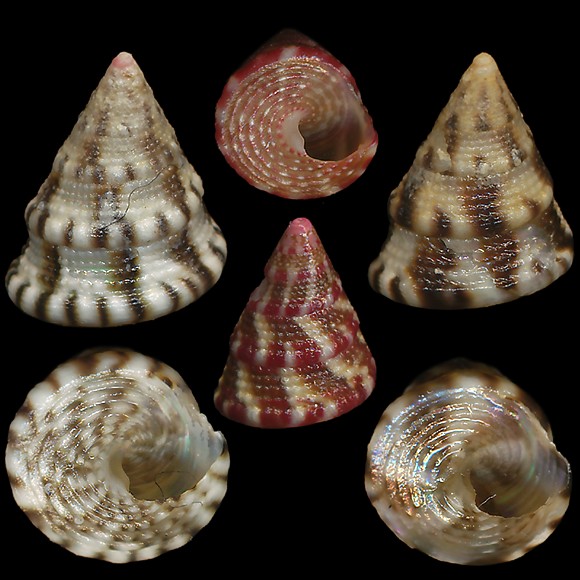 |
British islands to Morocco, Gorringe and Ampère seamounts to Mediterranean. Grazer and deposit feeder in the infralittoral down to the continental shelf. It is often found around Posidonia plants. Basionym: Trochus exasperatus.
1m deep, Port-Miou, Cassis, Provence, S. France. 6-8mm. |
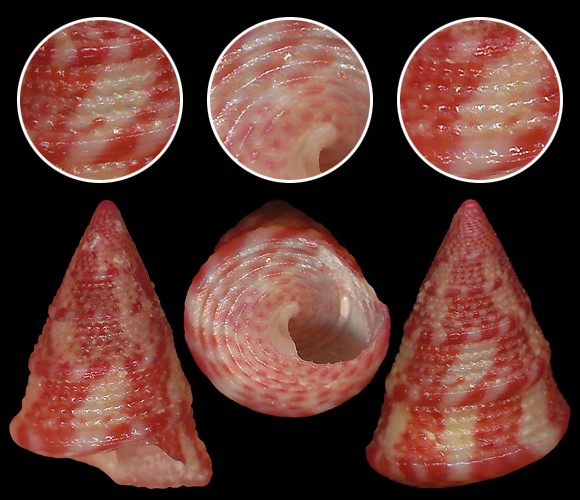 |
Synonyms: elegans, erythroleucos, exiguus, igneus, istrianus, mixtus, pyramidatus, tricolor, vulgaris…
Variant “corallinus” Monterosato. 2m deep, on broken shells and stones, Mijas, Málaga, Andalucia, S. Spain. 11mm. |
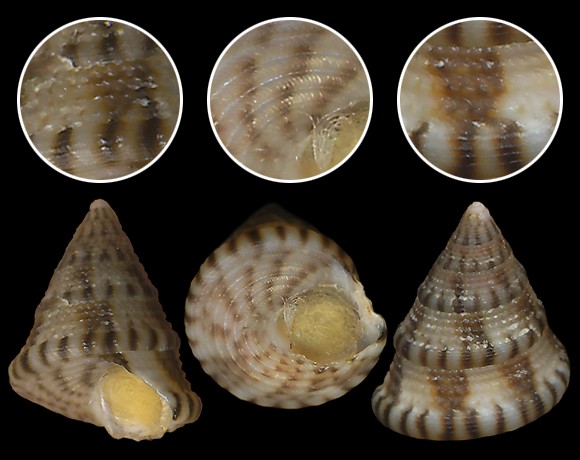 |
2m deep, on Posidonia, Murcia, S. Spain. 7mm.
The thick sutural cord is engraved with thin spiral striae. |
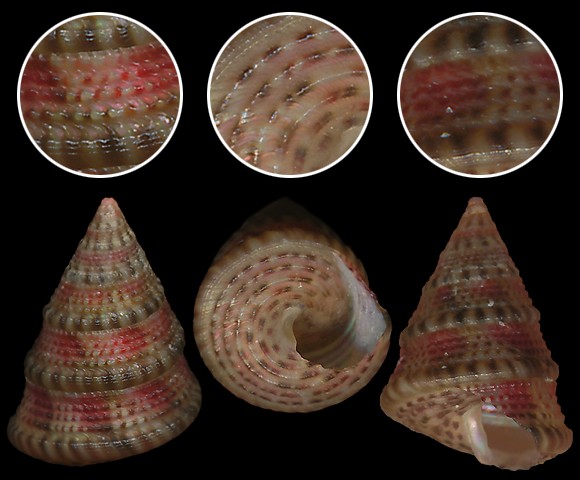 |
The variant “tricolor” Risso, 1826.
Dredged at 30m deep, off Cabo de Palos, Murcia. 10mm.
In addition to the sutural cord, the species bears four spiral rows of granulations per whorl. The interspaces show minute prosocline lamellae. On the base, the cords become smooth. |
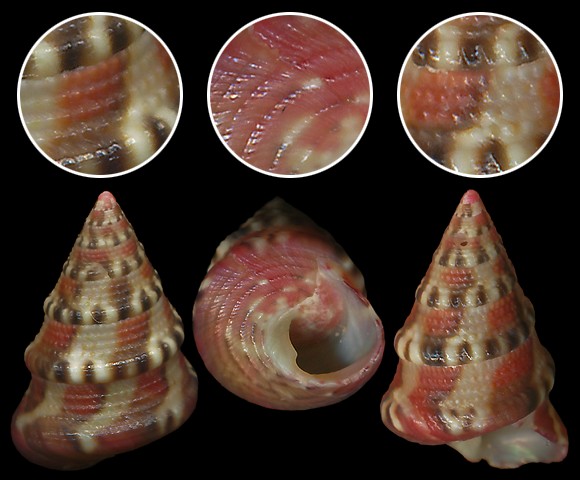 |
| Specimens with a sutural cord markedly stronger than usually can be named “f. matonii” Payraudeau, 1826.
Here is a matonii x tricolor, obviously pyramidatus, collected at 27m deep, on rocks with algae, Ladispoli, Roma, Lazio, W. Italy. 10mm. |
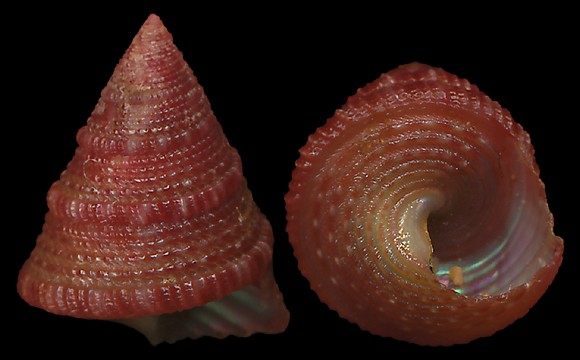 |
“Exasperatus” means inflamed as well as rough.
This specimen was collected in fish trap, on rocky bottom with algae, Armação de Pêra, Silves, Faro, Algarve, S. Portugal. 10mm. The sutural cords show here some prosocline folds in addition to the usual spiral striae. |
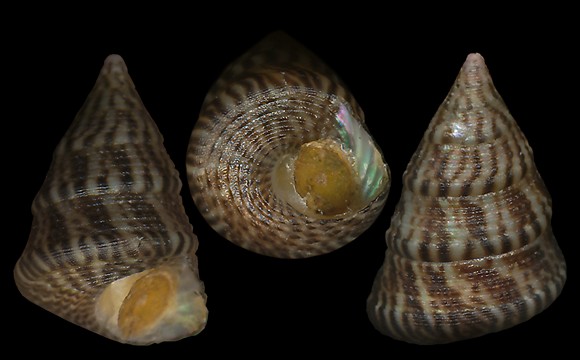 |
Variant “monterosatoi”, Bucquoy, Dautzenberg & Dollfus.
Concave whorls, pattern of white and dark flames.
30m deep, Cabo de Palos. 9mm. |
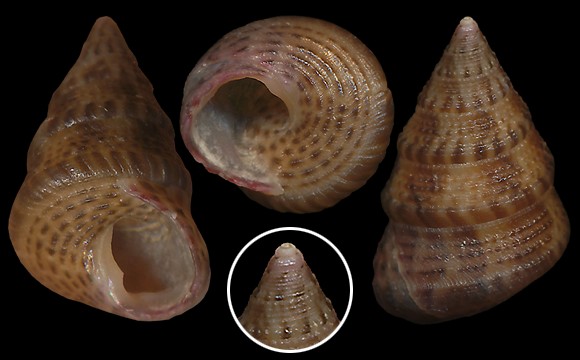 |
| High-spired specimen found on stones in algae, off Ghjunchitu bay, Isola Rossa, NW. Corsica. 10mm. |
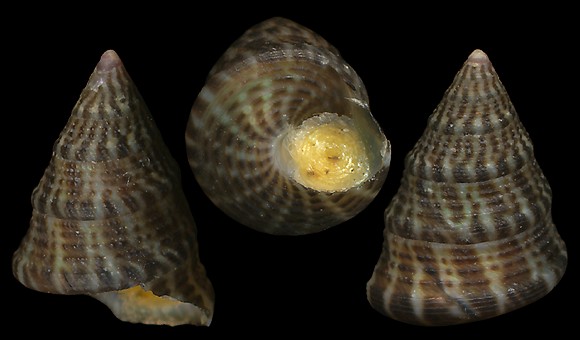 |
| Other “monterosatoi” found at 2m deep, under stone, Garrucha, NE. of Almería, Andalucia. 9mm. |
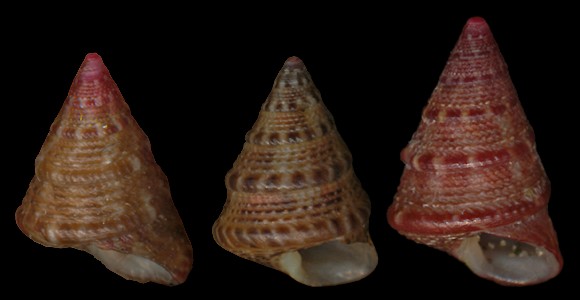 |
Variation in a same locality.
Beachstormed, Cap d’Agde, Occitania, S. France. 11-12,5mm. |
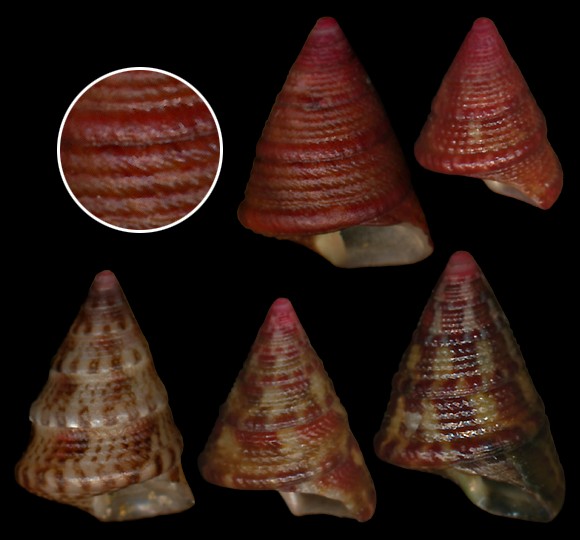 |
| Same spot. 7-11mm. |
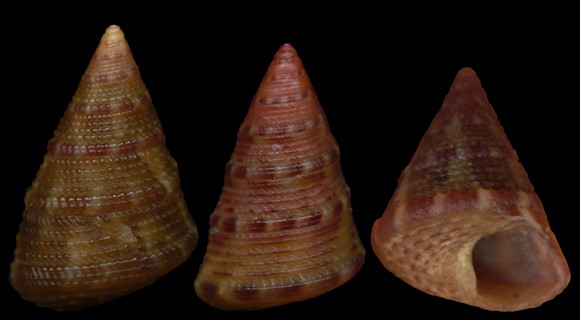 |
| At 33m, Secche di Tor Paterno, Torvajanica, Roma. 7,5-9mm. |
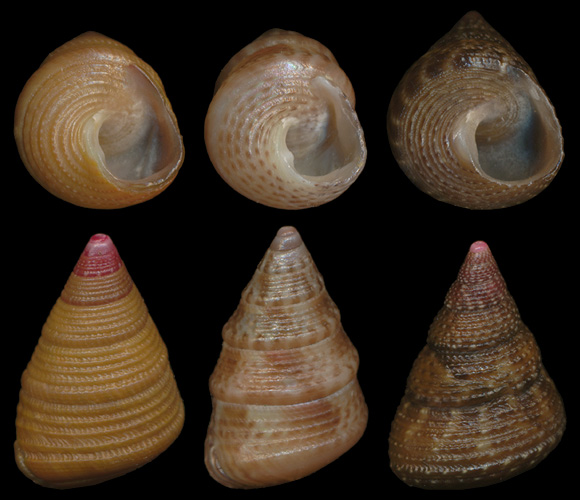 |
| Cap d’Agde. 9-10mm. |
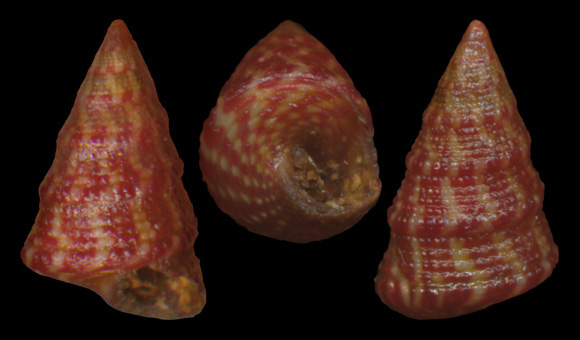 |
Variant “corallinus”.
30m deep, Poetto, Cagliari, S. Sardinia. 8mm. |
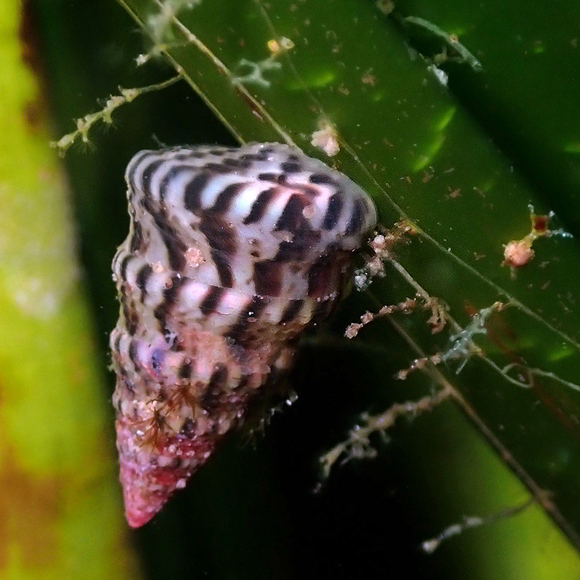 |
| Îlot de la Gabinière, off the southern coast of Port-Cros island, Hyères, Var, Provence, S. France. Original picture provided by slebris for iNaturalist – (CC BY-NC). |
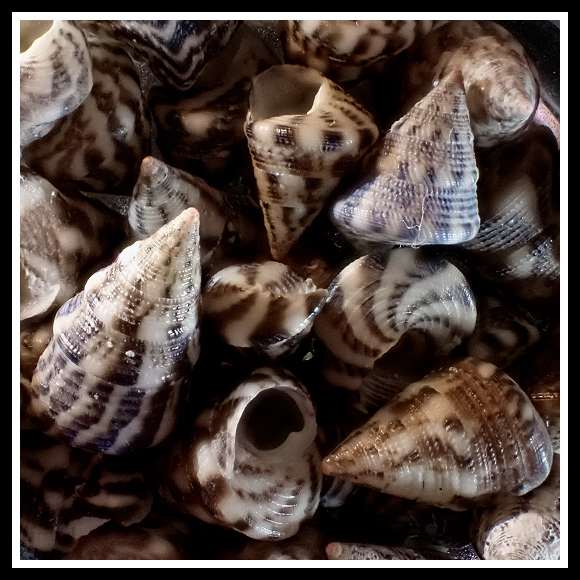 |
| Infralittoral population of “monterosatoi” from the Saronic Gulf, SE. Greece. |















